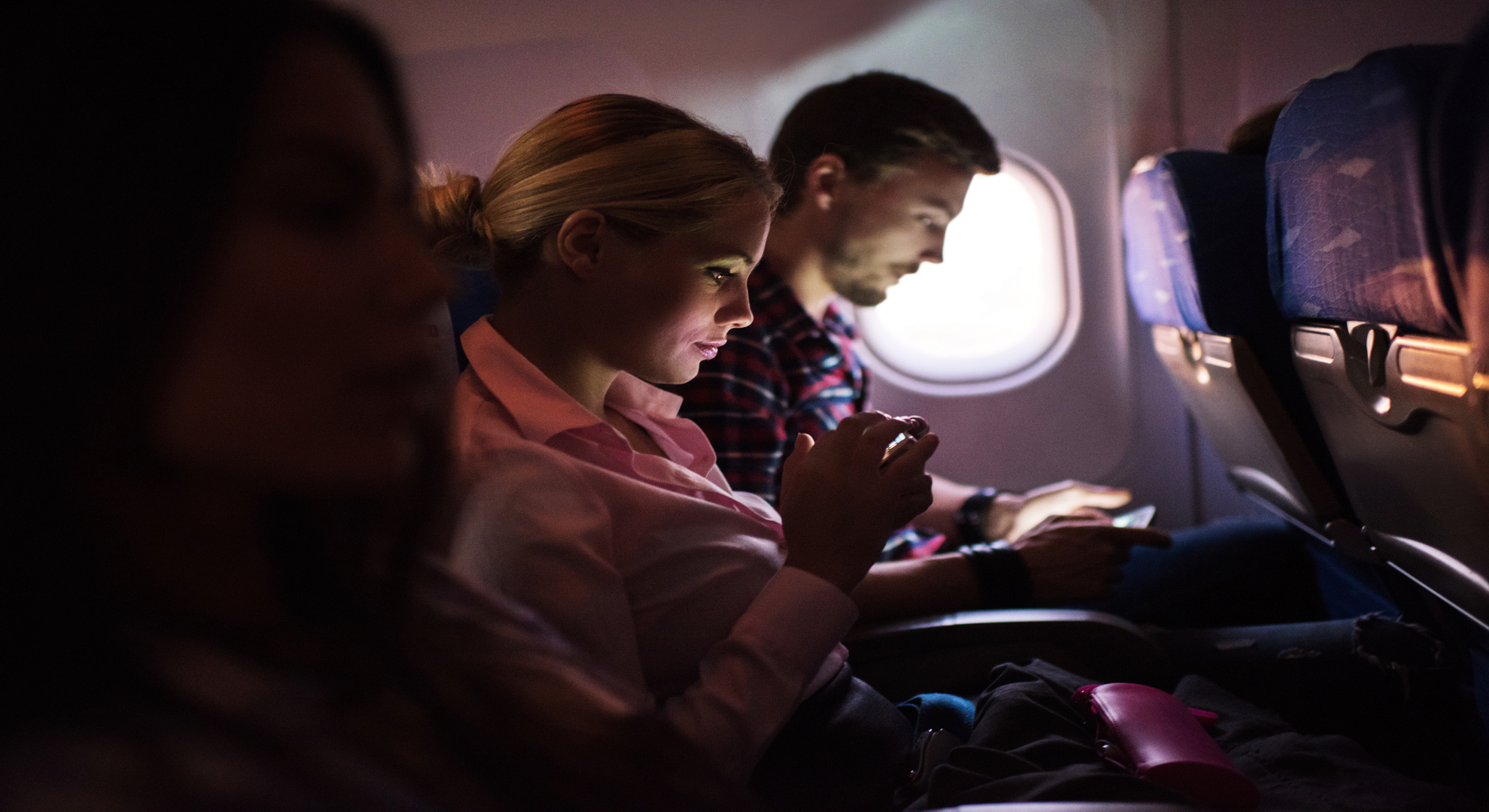
27 Oct Wi-Fi on planes – how does it work and why isn’t it widespread?
Even though connectivity now feels almost as natural to us as the air we breathe, we’re still rather poorly served when it comes to network connectivity on certain modes of transport. Trains, buses, even ocean-bound cruise liners have long since offered passengers connectivity. But they’re typically a world away from the wireless connections we’re used to, with enough stability and bandwidth to cope with high demand – by today’s standards – from large groups of people simultaneously.
And if that’s the case on land or at sea, it’s so much more pronounced in the air on commercial flights. So far, it hasn’t been possible to offer passengers connectivity on any real scale when flying with commercial airlines. In fact, most airlines still insist everyone switches their devices to “airplane mode” the moment the seatbelt signs go on, disabling all connectivity, because air traffic and safety regulations have historically advised against them. But our technological reality has shifted substantially and network connectivity on aircraft is now very close to becoming widespread thanks to 5G.
Myths and realities of connectivity on aircraft – is it dangerous?
Absolutely not. Air travel is by far the safest and one of the most strictly regulated sectors in the world, and nobody would be allowed to fly with a phone in their pocket if simply switching on a device with connectivity enabled posed even the slightest safety risk, even in the case of accidental activation. Keeping phones and tablet devices switched off at all times – or at least during the most sensitive phases of the flight, i.e. takeoff and landing – is simply evidence of airlines applying maximum caution.
Don’t forget, wireless network connections make use of radio space, like many aircraft systems. And although they operate at entirely different frequencies and wavelengths, eliminating any chance whatsoever of interference is simply the aviation industry applying a “belt and braces” safety measure.
How does Wi-Fi network connectivity work on aircraft?
There are essentially two ways of achieving wireless connectivity on planes: ground-to-air and air-to-air. In the first scenario, network signals are transmitted by various antennae on the ground as aircraft move through the sky above, even at high altitudes. Whereas in the second scenario, signals are sent to passenger cabins via satellite transmitters.
With ground-to-air systems, signals can’t be transmitted when aircraft fly over large barren landscapes without any antennae for hundreds of miles around – such as over the oceans – making connectivity sporadic and slow. In air-to-air systems, by using satellite signals, coverage is much more effective, stable and fast, but also much more expensive. That’s why the vast majority of airlines apply an extra charge if you want to make use of connectivity in the cabin.
Will 5G connectivity become standard in the skies?
The technical characteristics of both connectivity models, lack of stability and high costs for users who want to get online are likely the main reasons why in-flight connectivity hasn’t become commonplace in the day-to-day lives of commercial airlines. So far. The transmission capabilities of 5G, its very low latency and stability could just see it become the new standard.
In fact, since late 2022, the European Union has allowed willing airlines to technically adapt their fleets to receive 5G signals, enabling uninterrupted high-speed wireless connectivity in the skies as a result. At least on journeys between EU member states. According to Internal Market Commissioner Thierry Breton, 5G “will provide innovative services for people and growth opportunities for European businesses”. As the Commissioner told the media when the decision was made public, “the sky is no longer the limit when it comes to the possibilities of super-fast, high-capacity connectivity”.

